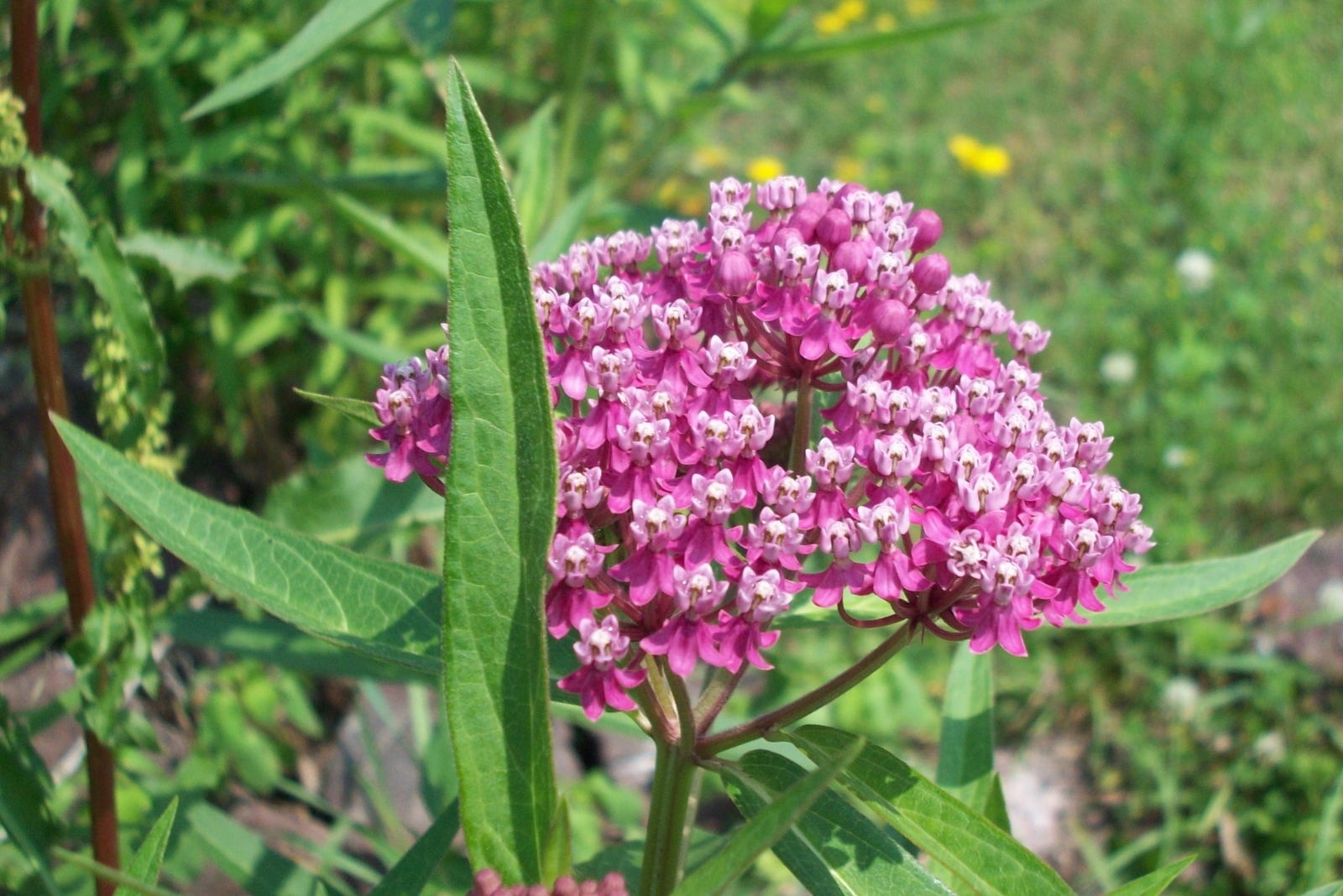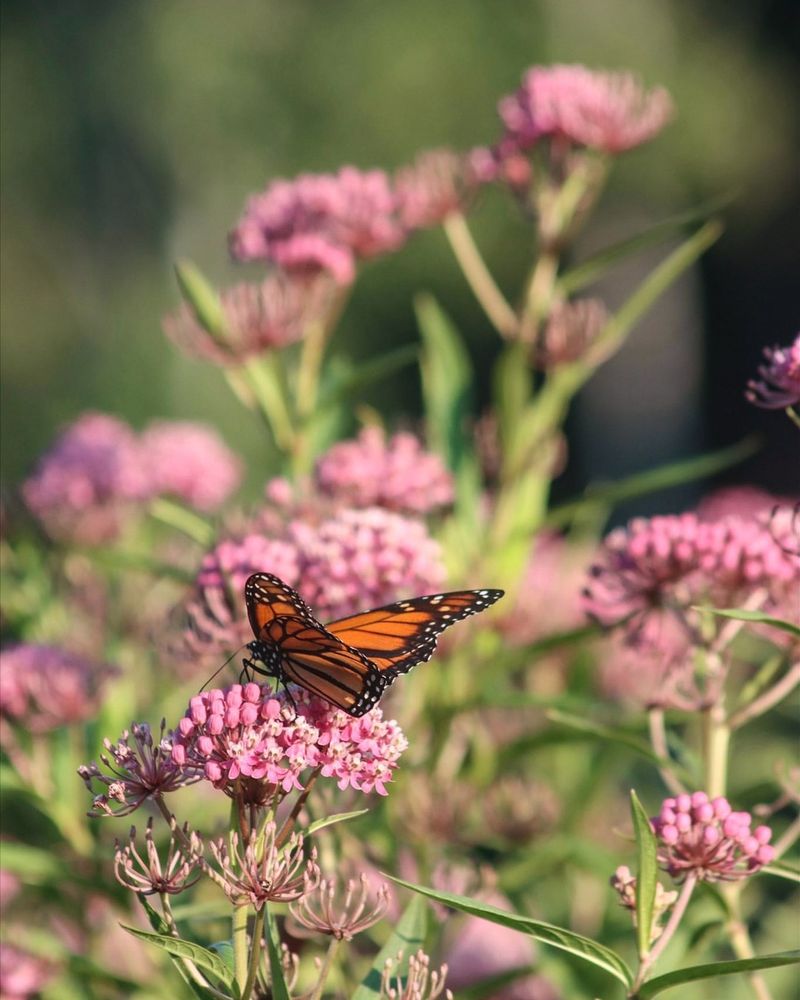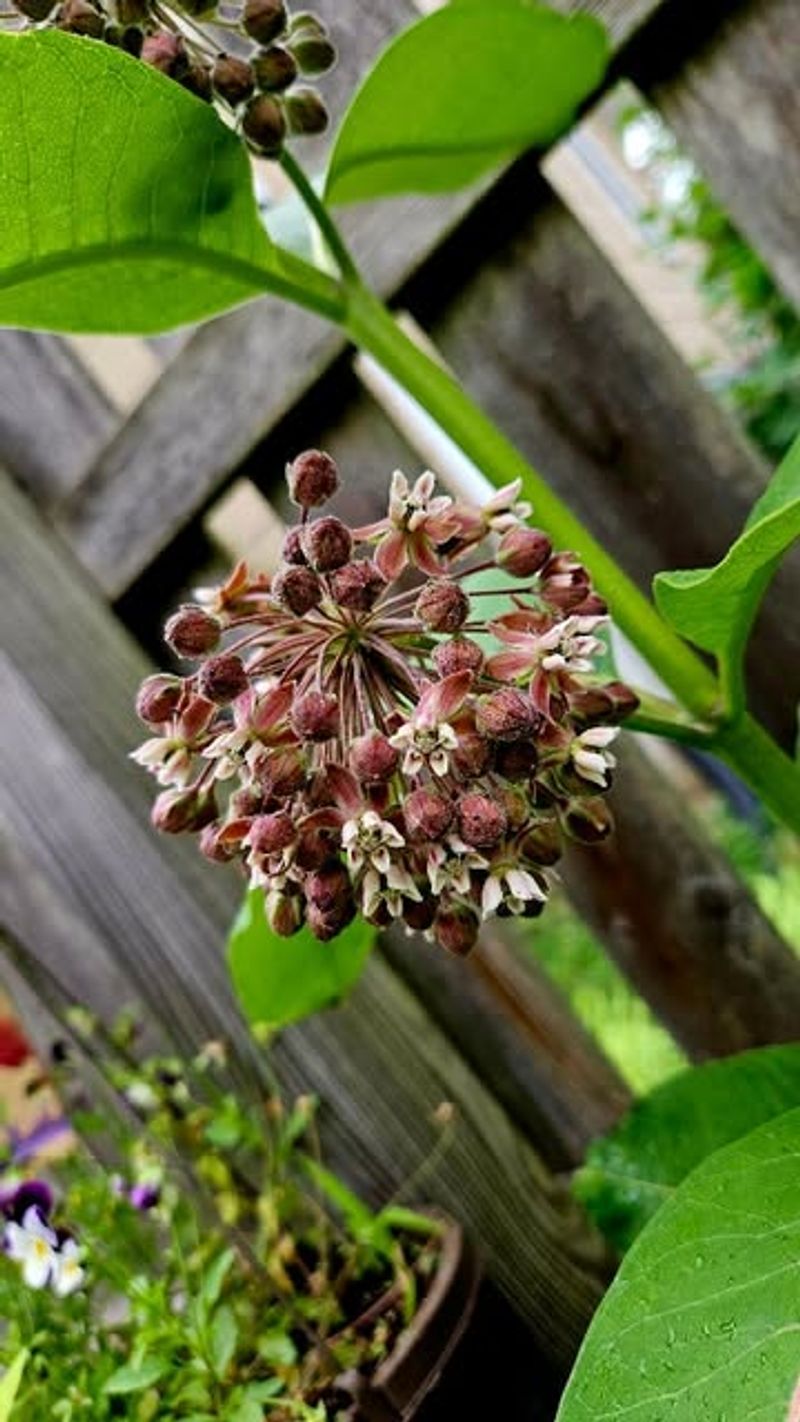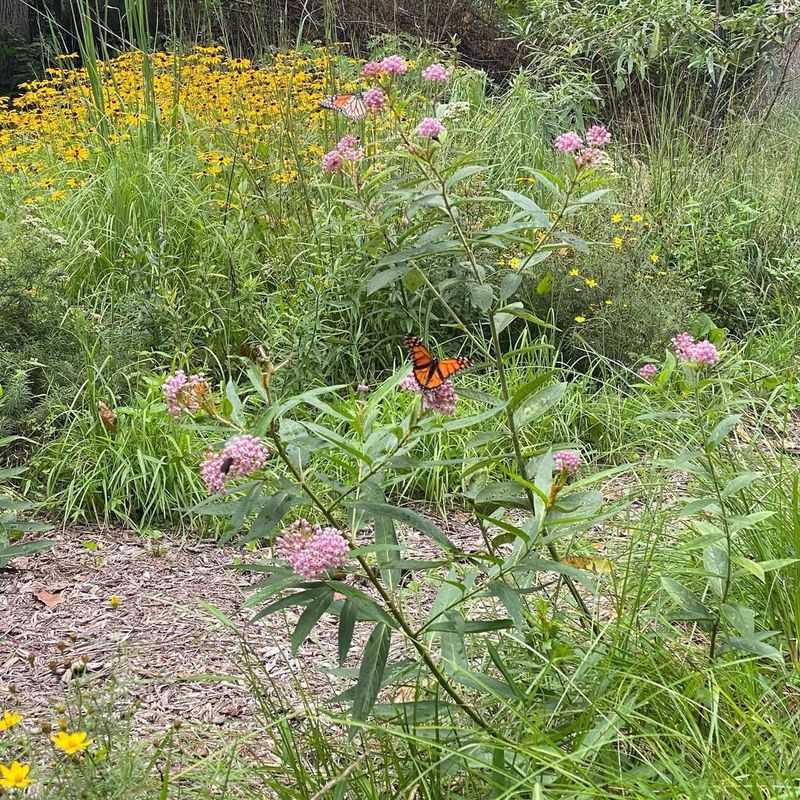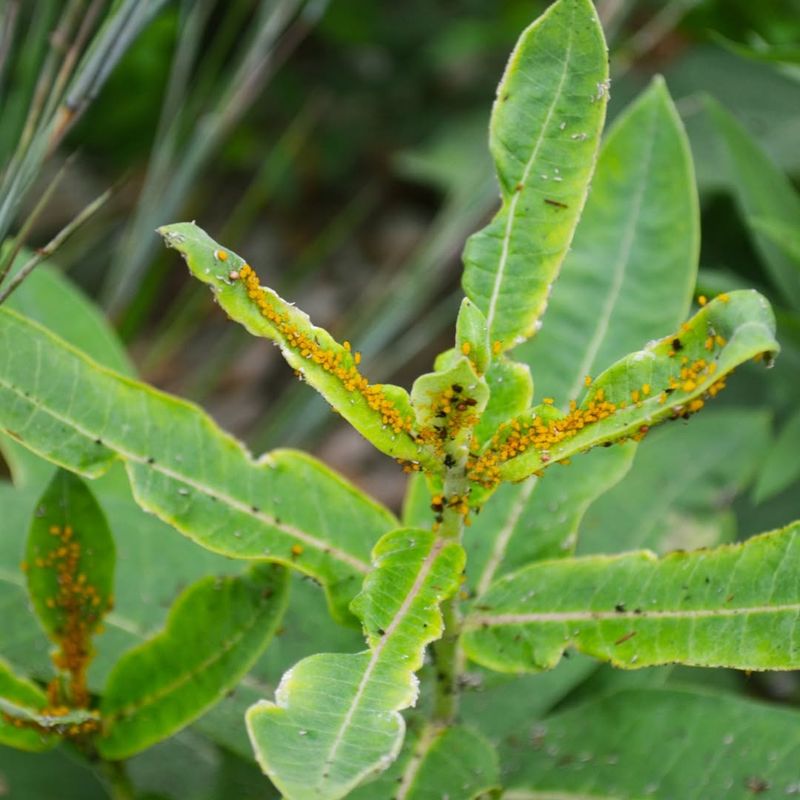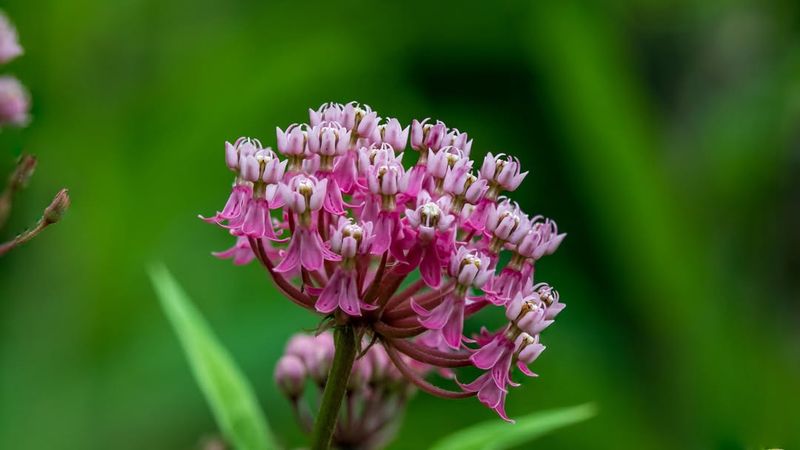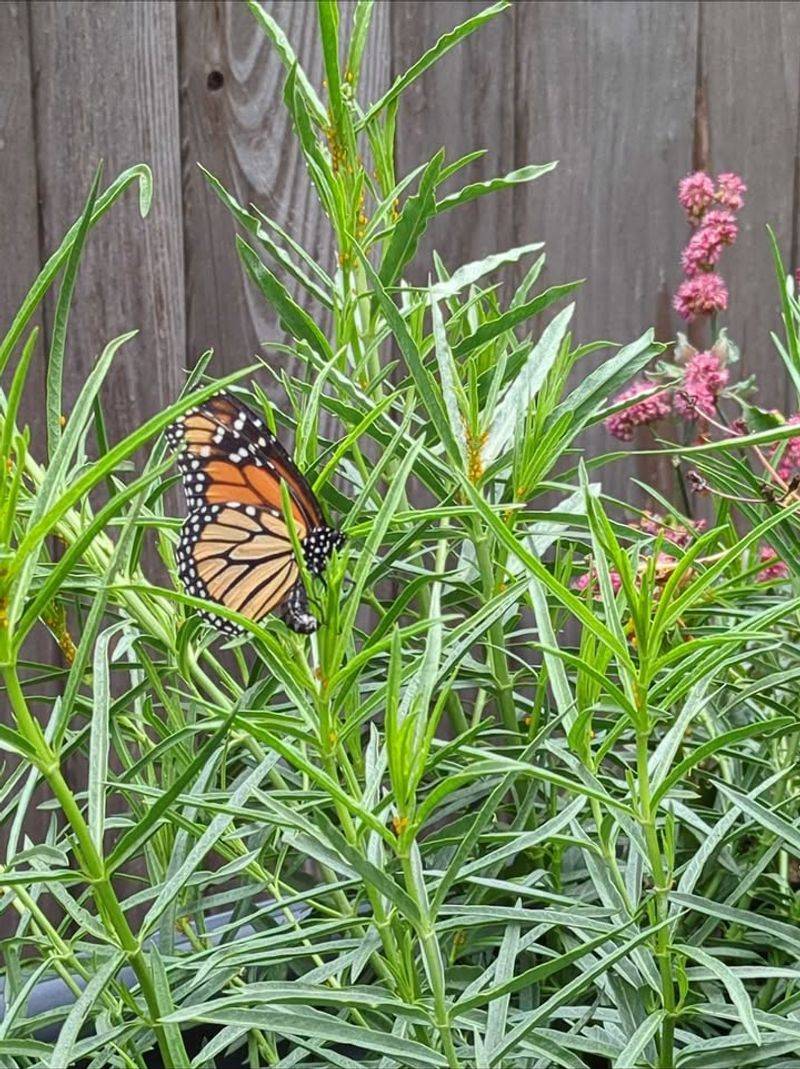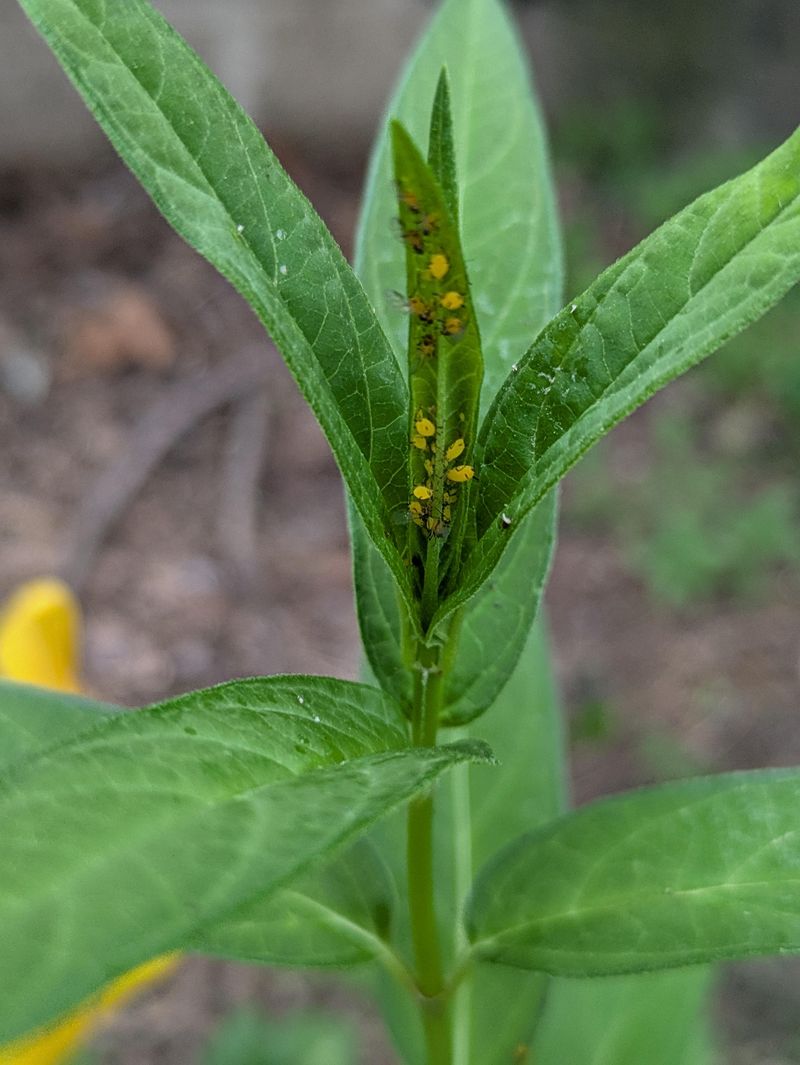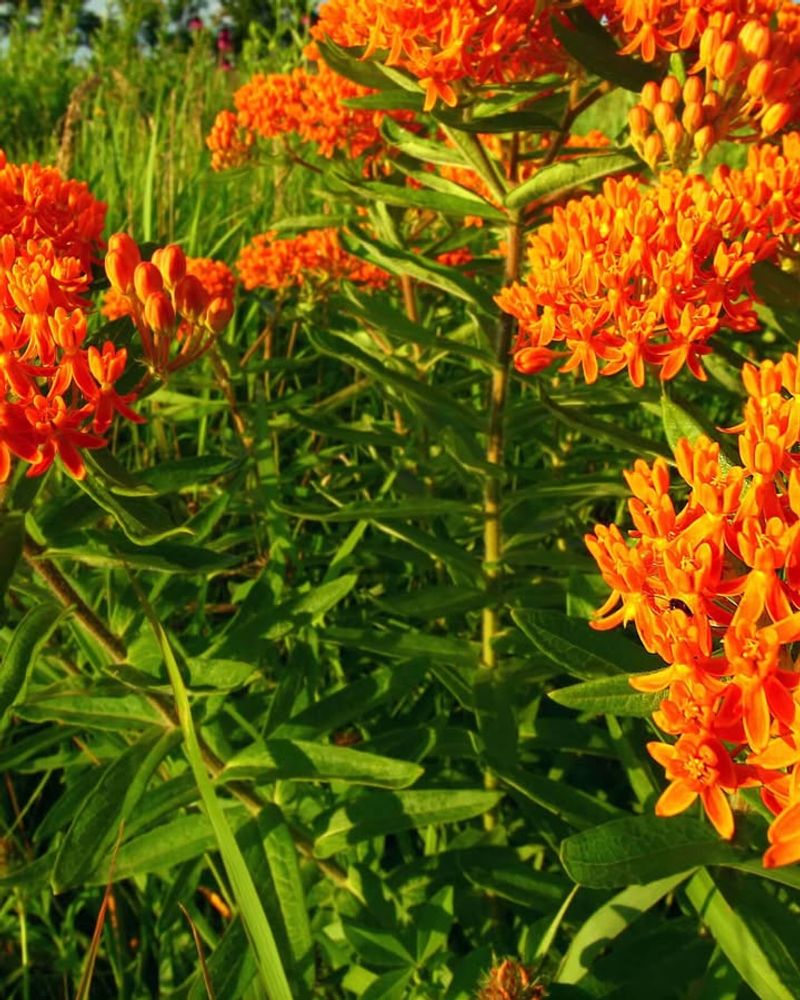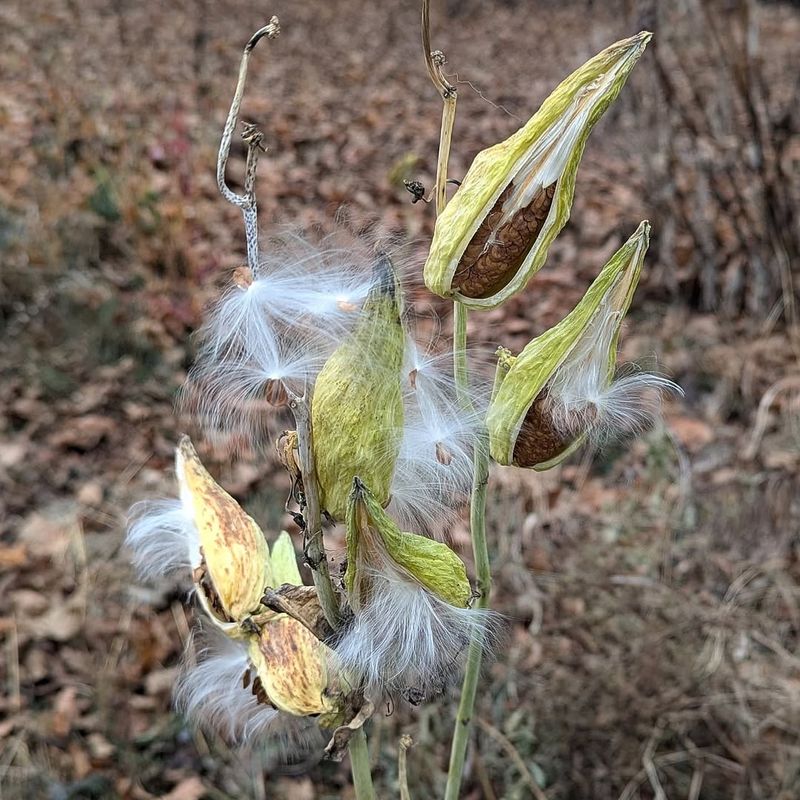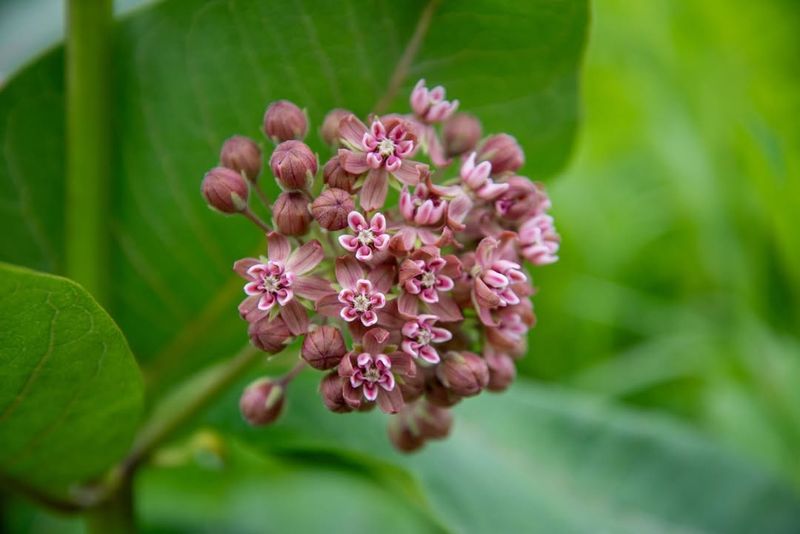Milkweed is a tricky beauty in California landscapes. I’ve seen how it can both enhance a garden and create challenges depending on how it’s handled.
Understanding its quirks makes all the difference. Here are ten ways milkweed can impact your yard.
1. Monarch Butterfly Magnet
Monarch butterflies depend entirely on milkweed to survive, making your California garden a critical habitat. Female monarchs lay eggs exclusively on milkweed leaves, and the caterpillars munch on them for nourishment.
Without milkweed, these iconic orange-and-black butterflies would disappear from our state. Planting native species like narrow-leaf milkweed creates a safe haven where monarchs can breed and thrive throughout their migration journey.
Your yard becomes part of a wildlife superhighway connecting habitats across California and beyond.
2. Aggressive Spreading Tendencies
Some milkweed varieties spread rapidly through underground roots called rhizomes, which can invade flower beds and lawns. California gardeners sometimes find milkweed popping up in unexpected places, crowding out other plants they’ve carefully chosen.
Common milkweed is especially notorious for this behavior in residential landscapes. Containing it requires installing root barriers or choosing clumping species like showy milkweed instead.
Regular monitoring helps prevent milkweed from taking over your entire yard and keeps your garden looking organized and intentional.
3. Drought-Tolerant Landscaping Star
Native California milkweed species have adapted to dry conditions, making them perfect for water-wise gardens. Once established, plants like desert milkweed and narrow-leaf milkweed need minimal watering even during hot summers.
Gardeners struggling with water restrictions find milkweed an excellent choice for sustainable landscaping. The deep root systems access moisture far below the surface, keeping plants healthy without constant irrigation.
Adding drought-tolerant milkweed reduces your water bills while supporting local ecosystems across California’s diverse climate zones.
4. Toxic Sap Safety Concerns
Milkweed produces a sticky white sap containing toxins that protect it from most predators but can irritate human skin and eyes. California families with young children or curious pets need to exercise caution when handling these plants.
The sap rarely causes serious harm, but washing hands after touching broken stems prevents discomfort. Teaching kids not to break milkweed stems or rub their eyes while gardening keeps everyone safe.
Wearing gloves during pruning or transplanting offers simple protection while maintaining your California landscape.
5. Beautiful Seasonal Blooms
Milkweed flowers create stunning displays ranging from pale pink to vibrant orange depending on the species you choose. California gardens benefit from these eye-catching blooms that appear throughout spring and summer months.
Showy milkweed lives up to its name with large, fragrant pink flower clusters that brighten any landscape. The blossoms add vertical interest and texture while attracting attention from neighbors and visitors alike.
Combining different milkweed varieties extends the blooming season and keeps your California yard colorful for months.
6. Pollinator Paradise Creation
Beyond monarchs, milkweed attracts dozens of beneficial insects including native bees, hummingbirds, and other butterfly species. California’s declining pollinator populations desperately need the nectar-rich flowers milkweed provides throughout growing seasons.
Honeybees and bumblebees visit milkweed blossoms constantly, improving pollination for nearby vegetable gardens and fruit trees. Creating pollinator habitat helps entire ecosystems function properly while increasing your garden’s productivity.
Your California landscape becomes a buzzing hub of activity supporting biodiversity and environmental health.
7. Aphid Infestation Problems
Bright orange oleander aphids cluster on milkweed stems and leaves, sometimes covering entire plants in California gardens. While these aphids rarely kill milkweed, heavy infestations look unsightly and can weaken young plants significantly.
The good news? Ladybugs and lacewings naturally control aphid populations without requiring pesticides that harm butterflies. Spraying plants with water dislodges aphids temporarily, though they often return quickly.
California gardeners learn to tolerate moderate aphid numbers as part of the milkweed-growing experience.
8. Low-Maintenance Garden Addition
Once established, native milkweed species require almost no care from California gardeners who appreciate hands-off plants. Unlike fussy flowers demanding deadheading and fertilizing, milkweed thrives on neglect in appropriate locations.
Occasional trimming of spent flower stalks keeps plants tidy, but even that step is optional for informal landscapes. Milkweed resists most diseases and pests besides aphids, eliminating the need for chemical treatments.
Busy California homeowners find milkweed ideal for creating beautiful, functional landscapes without constant weekend maintenance work.
9. Seed Pod Mess Management
Milkweed produces large seed pods that eventually split open, releasing hundreds of silky seeds that float on the wind. California gardeners sometimes find these fluffy seeds landing everywhere—in pools, on patios, and throughout neighboring yards.
Removing pods before they burst prevents this minor mess while also controlling unwanted spreading. Some people enjoy the architectural interest dried pods add to fall gardens and winter arrangements.
Balancing aesthetics with practicality helps you decide whether to remove or enjoy milkweed’s distinctive seed pods.
10. Educational Garden Opportunity
Growing milkweed transforms California yards into outdoor classrooms where children observe butterfly life cycles firsthand. Watching caterpillars hatch, grow, form chrysalises, and emerge as butterflies creates unforgettable learning experiences right at home.
Schools across California plant milkweed specifically for science education and environmental awareness programs. Kids develop appreciation for nature and conservation while understanding how individual actions support wildlife populations.
Your milkweed patch becomes a living laboratory teaching valuable lessons about ecosystems, interdependence, and environmental stewardship.

